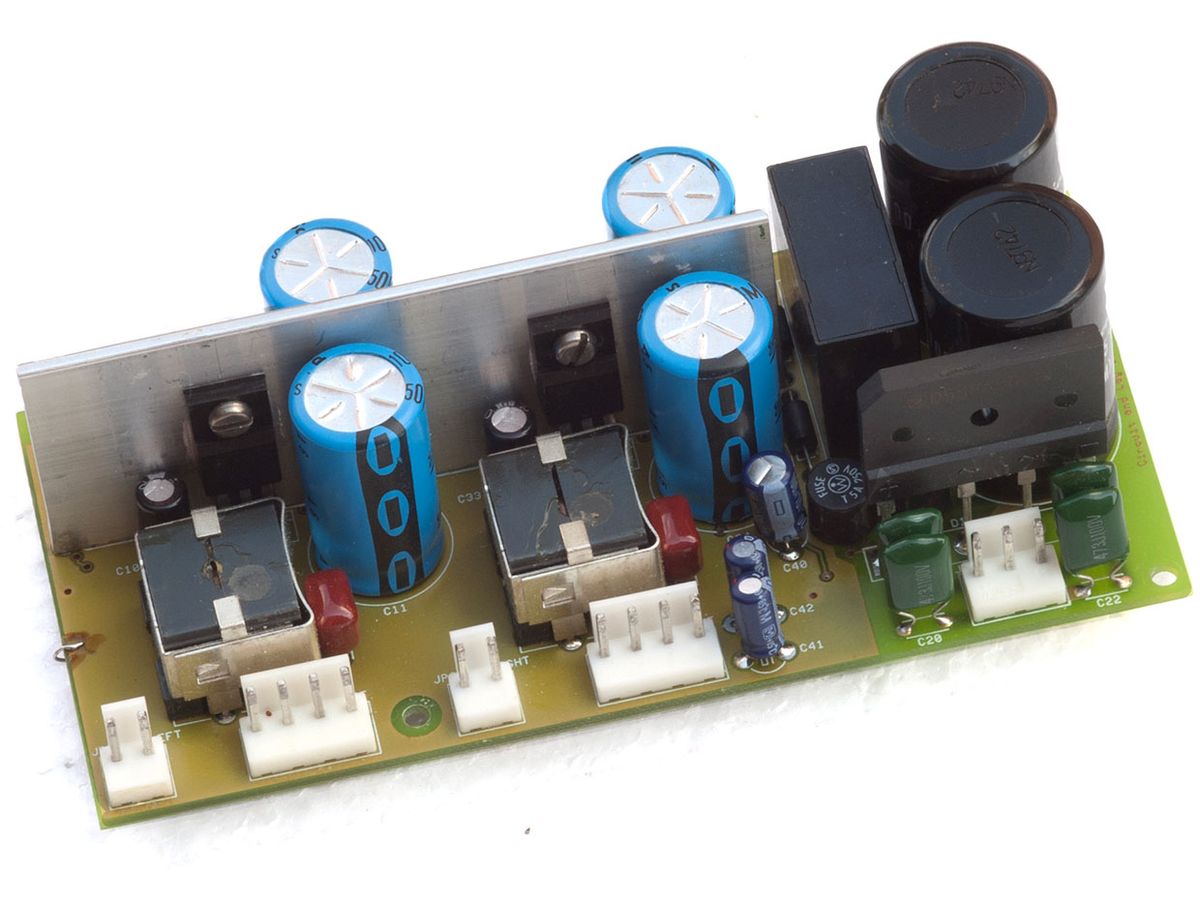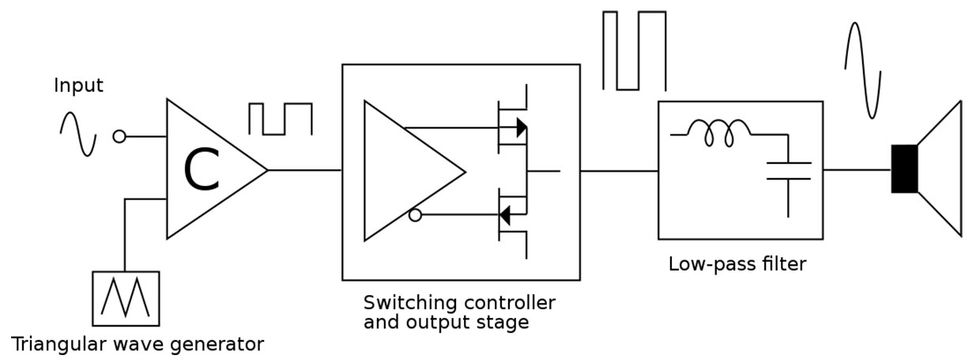Editor's note: An audio amplifier module is only part of an audio amplifier, which also needs a power supply, chassis, and assorted connectors, fuses, indicators, and other hardware to function. So a module might be considered an odd choice for a consumer electronics hall of fame. But in this case, several excellent amplifiers were among the first to incorporate Philips's singular UcD class-D module. Selecting one of them would have been a random choice—and when you get right down to it, it's the use of the module that would have made any of them worthy of consideration in the first place.
It's not often that one circuit revolutionizes a huge product category, but the Philips Universal class-D (UcD) module did just that for audio amplifiers. Before the UcD, there had been a few quirky and short-lived commercial class-D amps. But with its stunning combination of small size, light weight, low cost, high efficiency, and remarkable performance, the UcD showed what the technology could do. It helped unleash a wave of design work at other firms that finally pushed class-D amps into the mainstream. Today, it is a virtual certainty that you own at least one class-D unit, in your home, car, smartphone, or smart speaker.
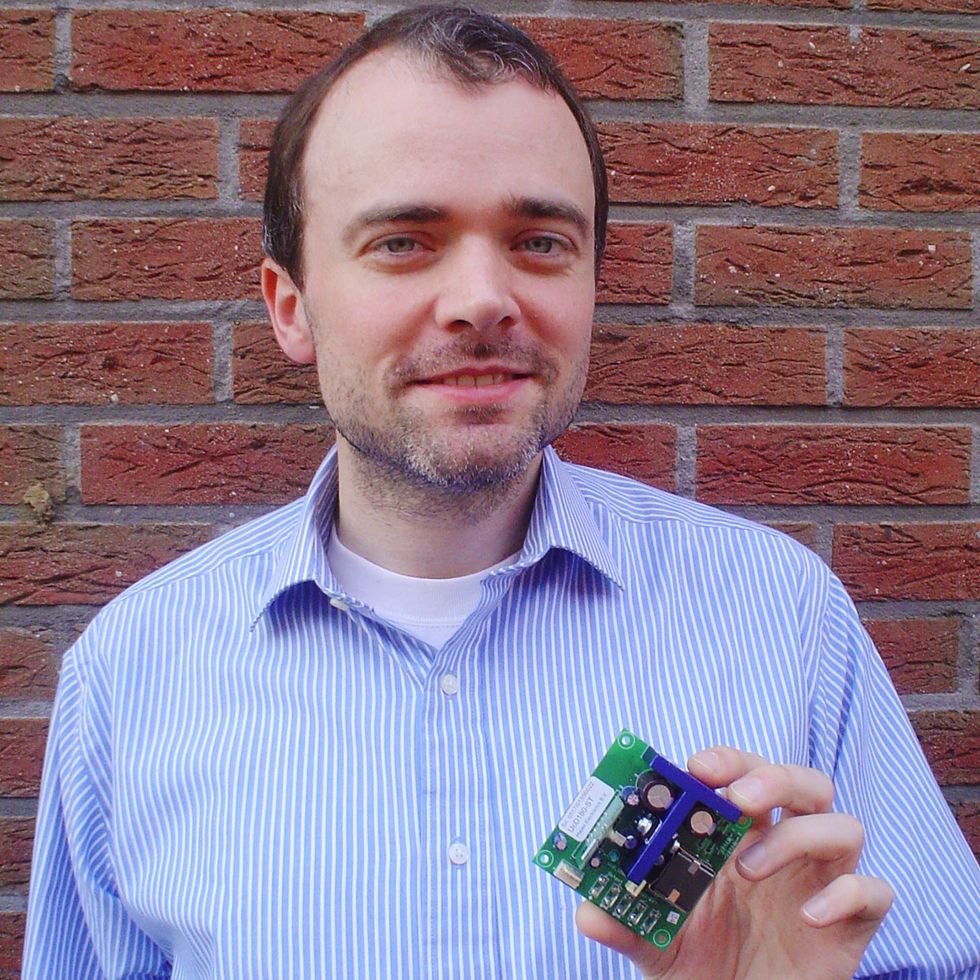
Philips's UcD was the brainchild of a single engineer, Bruno Putzeys, who grew up in a home where audio electronics held sway. “There was always something happening in the house that had to do with amplifiers or speakers," Putzeys recalls of his childhood. When he first learned about class-D amps, he was hooked: “I'd read about them in a French magazine when I was 15 and was fascinated by the technique." In college, his thesis was on class-D amps. It was that work that landed him a job at Philips.
Power amps are sorted into categories, or classes, based on how they amplify signals. Of the traditional amp types, classes A and AB work by making output transistors conduct more or less current depending on the input signal. The scheme works very well, but it produces a lot of unwanted heat. (There are class-B and class-C amplifiers, too, but they are not used for audio.) Class D is different. In a nutshell, a class-D amplifier works by converting the input signal into a varying train of square pulses of fixed amplitude. This technique is called pulse-width modulation: The pulse width of this square wave represents the level of the analog signal. Imagine that this scheme is converting a sine wave: The top of the sine wave is converted to wide pulses, and the bottom becomes skinny ones. These pulses efficiently switch transistors on and off, and the resulting output, stripped of the high-frequency switching noise by a low-pass filter, drives a speaker directly.
Class-D amps can be extremely efficient because the switching transistors are almost always either on or off and therefore waste little or no power. Thus class-D amps can be more than 90 percent efficient, compared with, typically, about 60 percent for class AB. Because they are so efficient and small, class-D amps can make the most of limited battery power and can be inserted in tight spaces, making them suitable for smart speakers and cellphones, where opportunities to dissipate heat are pretty meager.
Not all of these advantages were widely appreciated in 1995, when Philips hired Putzeys. He says that after he signed on, Philips lost interest in class-D amps, but he managed to get the go-ahead to build one anyway. That first device sparked enough interest to earn Putzeys the R&D budget to keep trying to improve his class-D amp designs while he worked on class-AB models, which then dominated audio.
In his earliest work, Putzeys says, he tried a lot of things that he now describes as “complicated, esoteric, nonscientific," and ultimately unfruitful. But at some point in 2001, one of his managers suggested Putzeys ought to produce a class-D amp Philips could actually use in a product. It wouldn't have to be perfect, he was told; just build something quick and dirty. “It was supposed to be simple and cheap, but it turned out to be something more than that," Putzeys says.
He came up with a design and simulated it. “I started the day with nothing in my hand and ended it with a circuit I could build," he says. The culmination of years of R&D, this design, which he called UcD, stripped away the complexity and esoterica, and the result was an amplifier module that, on paper anyway, could outperform any amplifier in its price range.
The finished circuit lived up to expectations. Still, Philips chose not to incorporate the amp into any of its own products, a fact that still irritates Putzeys all these years later. So he and his colleagues began selling it under license to other manufacturers, which incorporated it into speakers, home theater systems, and more. The UcD established the market for class-D amps in audio applications.
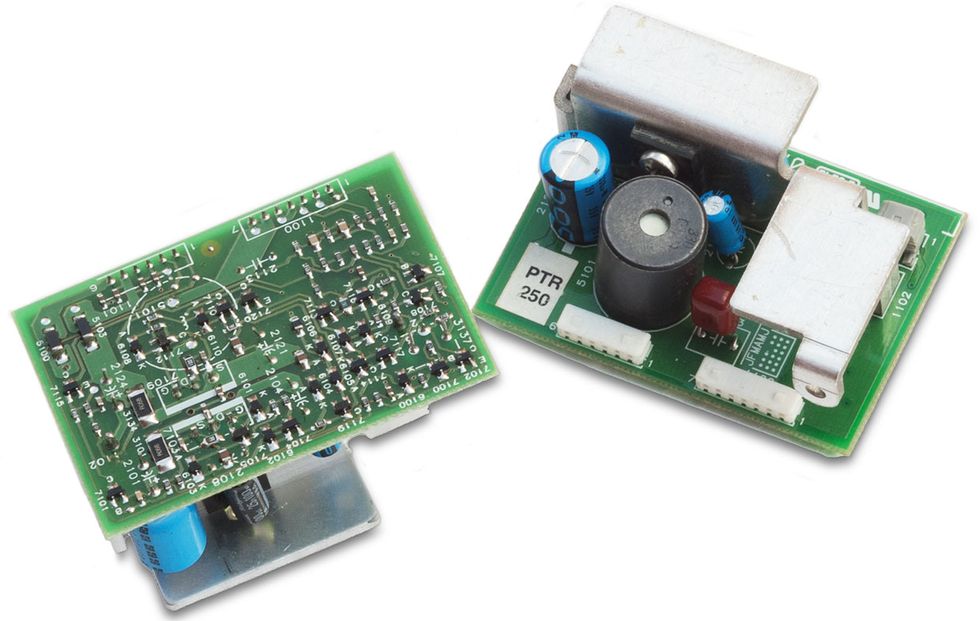
One of those early licensees was an audio startup called Hypex Electronics. Hypex soon began producing a version of the UcD that put a 180-watt (into 4 ohms) amplifier on a board measuring about 40 square centimeters. It was monaural, so two were needed for a stereo amplifier. It had astonishingly low total harmonic distortion: 0.02 percent across the entire audible range and at full power. Hypex sold the boards to dozens of audio companies, which in turn produced finished amplifiers. Among the early adopters of the technology was Yamaha Corp., which produced a line of five-channel receivers, along with such high-end names as Marantz, B&W, Channel Islands Audio, Meridian, Kharma, MM Audio, and Exodus.
In 2005, Putzeys too moved on to Hypex, where in 2008 he began working on a new amp called NCore. Compared with UcD, it improved power efficiency somewhat, but its real achievement was lowering distortion by a full order of magnitude. Audiophiles hailed it as the first class-D audio amp that sounded as good as the best class-A amps. The crucial difference was efficiency: Class-A amps are around 25 percent efficient, while NCores are about 92 percent efficient.
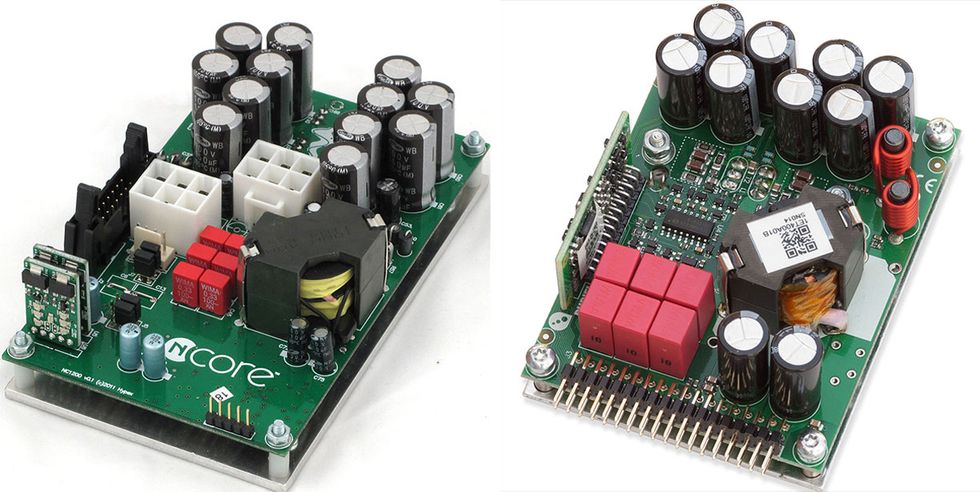
More recently, Putzeys cofounded two other audio companies, Kii Audio and Purifi. With Purifi, he announced a new class-D amp, called Eigentakt, that builds on the NCore and the UcD before it.
And though class-D audio has had a meteoric ascendance, the UcD has endured. Seventeen years after the first UcDs were built at Philips, Hypex still sells a direct descendant: the UcD180HG.
A version of this post appears in the October 2019 print magazine as “Bringing Big Sound to Small Devices."
